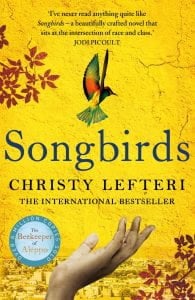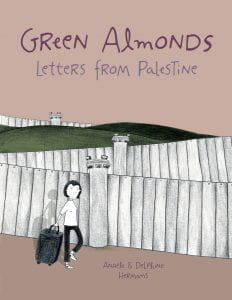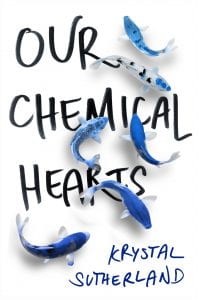 Sometimes, we are blind to things that happen around us. Sometimes, we don’t want to know. Sometimes, it is dangerous to know…
Sometimes, we are blind to things that happen around us. Sometimes, we don’t want to know. Sometimes, it is dangerous to know…
Nisha is a maid for Petra in Cyprus. Petra is a single mother, lucky to have Nisha to care for her daughter while she is at work. In some ways their lives have parallels. In others, they are far apart.
When Nisha disappears one night, Petra begins to realise how little she knows about her maid and how much she needs her presence. Her daughter Aliki pines for Nisha – but she is not the only one.
Where can Petra turn for help to find Nisha? Who might know where she went and why? Who are the people in the local community who might have observed Nisha’s last moves?
At home, Aliki remains distant and sad. Where is Nisha, the one who has basically replaced her distant mother over many years? As a young child, does Aliki have any hints about why Nisha chose to leave – if she actually did?
Christi Lefteri (also author of the Beekeeper of Aleppo) explores many different relationships in Songbirds – in terms of power and control, love and longing, past and future. It is set in her native Cyprus, and much of what she writes in Songbirds is based on conversations with domestic workers there; workers from other lands seeking to better the lives of their families, even at the sacrifice of distance.
Songbirds will leave you feeling sad, frustrated, confused and annoyed. But at its heart, the characters who look after one another and care for individuals will encourage you to look after and appreciate the little ones in life – even if they are as frail and exposed as the songbirds.
 Two sisters show life in different countries and different cultures in this graphic novel by Anaele and Delphine Hermans – a memoir of Anaele’s 10-month stay in Bethlehem while volunteering for a youth organization/NGO.
Two sisters show life in different countries and different cultures in this graphic novel by Anaele and Delphine Hermans – a memoir of Anaele’s 10-month stay in Bethlehem while volunteering for a youth organization/NGO. What a beautiful book – the story, the illustrations, the things you can learn, the things you can think deeply about!
What a beautiful book – the story, the illustrations, the things you can learn, the things you can think deeply about!






 That said, how many people regularly pick the winner?
That said, how many people regularly pick the winner? Henry – at 17 has never had a real girlfriend. Lola – had a fling with Henry, but then moved on to a relationship with Georgie. Murray – comical crazy over-the-top Aussie friend is thrown into the mix. (Maybe he’s a good drawcard for Australian YA readers?)
Henry – at 17 has never had a real girlfriend. Lola – had a fling with Henry, but then moved on to a relationship with Georgie. Murray – comical crazy over-the-top Aussie friend is thrown into the mix. (Maybe he’s a good drawcard for Australian YA readers?) This story oozes feelings and emotions; even in the little things. As you read, you can taste the meals Lucek has with his grandmother. They are deliciously described, even though they may be simple fare. You can also sense the atmosphere of their humble accommodation – a small apartment in Prague.
This story oozes feelings and emotions; even in the little things. As you read, you can taste the meals Lucek has with his grandmother. They are deliciously described, even though they may be simple fare. You can also sense the atmosphere of their humble accommodation – a small apartment in Prague. ‘Being Jazmine’ is the third book featuring Jazmine Crawford – part of the Invisible series by Cecily Paterson. That said, it was also a good read as a stand-alone title.
‘Being Jazmine’ is the third book featuring Jazmine Crawford – part of the Invisible series by Cecily Paterson. That said, it was also a good read as a stand-alone title. What are your friends like? Do they talk, act and think the same as you? Or do they have a few quirky differences in their personalities?
What are your friends like? Do they talk, act and think the same as you? Or do they have a few quirky differences in their personalities? Nate wonders what really makes people who they are. Is it determined at birth, or is it a result of how you are raised? Either way, things are not looking good for him. His dad is abusive, his mother is dead and he’s just finished 18 months in juvenile detention. Now he is off to some unknown location to stay with some unknown family member – his uncle, his mother’s brother.
Nate wonders what really makes people who they are. Is it determined at birth, or is it a result of how you are raised? Either way, things are not looking good for him. His dad is abusive, his mother is dead and he’s just finished 18 months in juvenile detention. Now he is off to some unknown location to stay with some unknown family member – his uncle, his mother’s brother. Ana lives in a detention centre in Darwin, having escaped her home in Iran, and initially being transported to Nauru. From Wickham Point Immigration Centre, she is able to attend school, but that is about all. No freedom. No hope. No life.
Ana lives in a detention centre in Darwin, having escaped her home in Iran, and initially being transported to Nauru. From Wickham Point Immigration Centre, she is able to attend school, but that is about all. No freedom. No hope. No life.